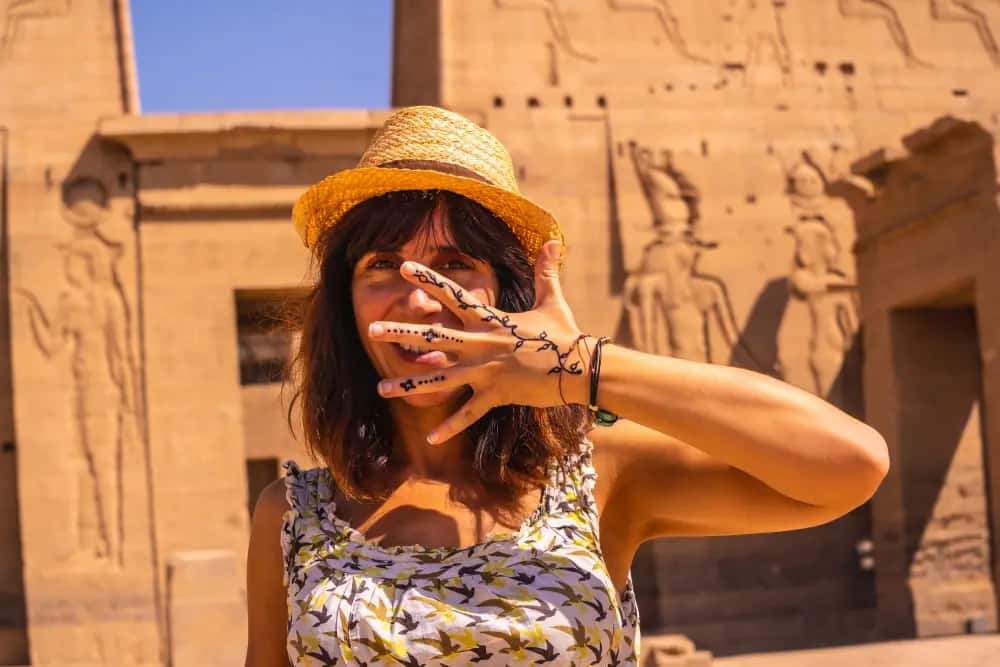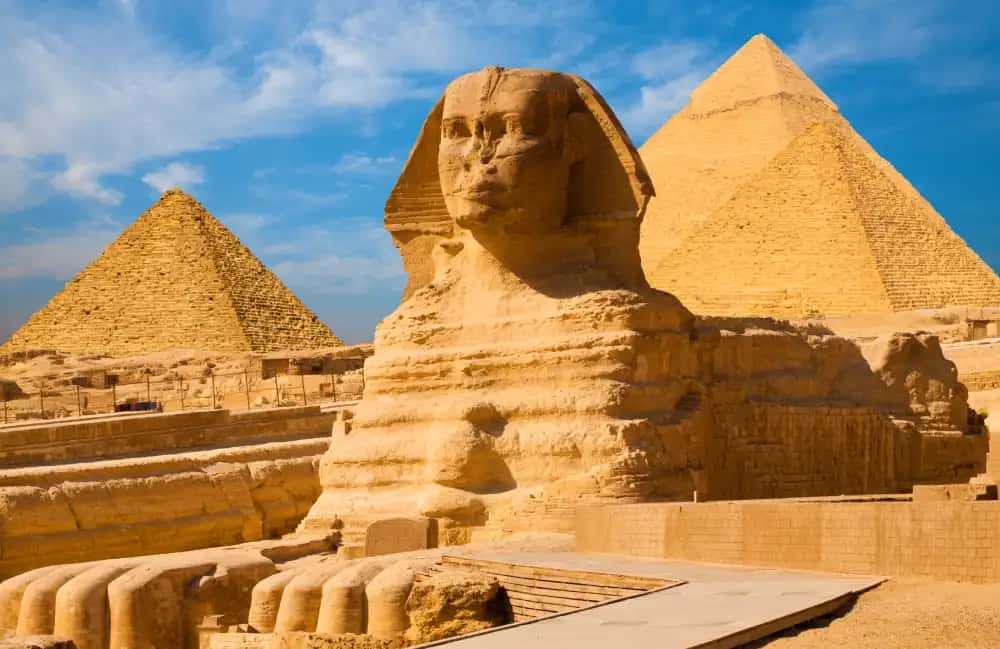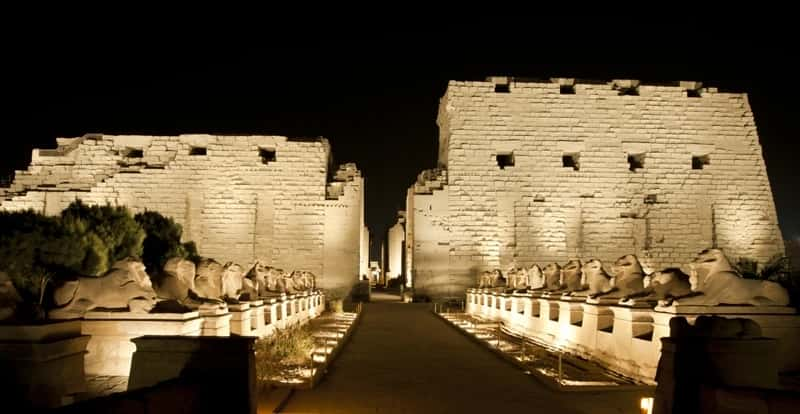
The Sphinx is one of the most iconic and intriguing symbols of ancient Egypt. This massive statue, with the body of a lion and the head of a human, has been a source of fascination for thousands of years. Its sheer size and grandeur have attracted tourists and scholars from all over the world, who come to marvel at its beauty and mystery. But what is the history and mythology behind the Sphinx, and what secrets does it still hold? In this article, we will explore the fascinating story of the Sphinx, from its origins to its modern-day legacy.
The Sphinx is believed to have been built during the reign of Pharaoh Khafre, who ruled Egypt during the Fourth Dynasty (c. 2575-2465 BC). It was carved out of a single block of limestone and is estimated to be around 4,500 years old. The Sphinx is located in Giza, just outside Cairo, and was originally part of a larger complex that included Khafre's pyramid and several other smaller pyramids.
Many theories exist about the purpose of the Sphinx, but most scholars agree that it was built as a symbol of the pharaoh's power and authority. The Sphinx was meant to guard Khafre's pyramid and ensure his safe passage into the afterlife. It was also believed to have a protective function, warding off evil spirits and enemies of the pharaoh.
Despite its grandeur and importance, the Sphinx fell into disrepair over the centuries. It was buried under sand and debris, and its face was damaged by erosion and weathering. It was not until the 19th century that the Sphinx was rediscovered and restored to its former glory.
Despite its long history, the Sphinx remains shrouded in mystery. Many theories abound about its origin and purpose, and scholars continue to debate these questions today. One popular theory is that the Sphinx was built as a monument to the sun god Ra, who was often depicted with the head of a lion. According to this theory, the Sphinx was meant to represent the pharaoh as a divine ruler, the earthly embodiment of Ra.
Another theory suggests that the Sphinx was built as a symbol of the pharaoh's power over the Nile River. The Sphinx faces east, towards the rising sun, and may have been intended to mark the beginning of a new day, a new year, or a new era in Egyptian history. The Sphinx may also have been linked to the cult of Osiris, the god of the afterlife, who was often depicted as a lion.
Despite these theories, the true purpose of the Sphinx remains a mystery. Some scholars believe that the Sphinx may have been part of a larger complex that included a temple and other structures, but there is little evidence to support this theory. Others speculate that the Sphinx may have been used for astronomical observations, or that it may have had a more practical function, such as a quarry or a workshop.
The Sphinx is also an important figure in Ancient Egyptian mythology. According to legend, the Sphinx was a fierce guardian who protected the entrance to the underworld. It was said to have the power to kill anyone who could not answer its riddle. The riddle of the Sphinx is one of the most famous in mythology, and has been retold in countless stories and legends.
The riddle of the Sphinx is as follows: "What goes on four legs in the morning, two legs at noon, and three legs in the evening?" The answer is "Man," who crawls on all fours as a baby, walks on two legs as an adult, and uses a cane in old age. Those who could not answer the riddle were said to have been devoured by the Sphinx.
The Sphinx is also associated with the goddess Sekhmet, who was often depicted as a lioness. Sekhmet was a powerful and fearsome goddess, known for her destructive powers. She was said to have the ability to create and destroy, and was often invoked in times of war or danger.
The Great Sphinx of Giza is one of the largest and most impressive sculptures in the world. It measures 73 meters long, 20 meters high, and 19 meters wide, and is carved out of a single block of limestone. The Sphinx is located on the Giza Plateau, just outside Cairo, and is one of the most popular tourist attractions in Egypt.
Despite its size and grandeur, the Sphinx is not without its problems. The statue has suffered from erosion, weathering, and pollution over the centuries, and has undergone several restoration efforts. The most recent restoration project, which began in 2015, aims to restore the Sphinx to its former glory and preserve it for future generations.
The Sphinx has undergone several restoration and conservation efforts over the centuries. The first major restoration project took place in the 18th century, when the Sphinx was uncovered from the sand and debris that had buried it. In the 19th century, the Sphinx was restored again, and its face was repaired and repainted.
In recent years, the Sphinx has undergone another restoration project, which began in 2015. The project aims to restore the Sphinx to its original condition, and to protect it from further damage. The restoration work includes cleaning the Sphinx's surface, repairing cracks and erosion, and reinforcing its base.
The Sphinx has been the subject of controversy and debate over the years. One of the most controversial theories about the Sphinx is that it is much older than previously thought, and may have been built by a civilization that predates the ancient Egyptians. This theory is based on the erosion patterns on the Sphinx's body, which some researchers believe are the result of water erosion, rather than wind and sand erosion.
Another controversy surrounding the Sphinx is the question of its missing nose. The nose of the Sphinx was broken off sometime in the 18th century, and its whereabouts are unknown. Some historians believe that the nose was deliberately destroyed by Napoleon's troops, while others suggest that it was vandalized by local religious leaders who were offended by the Sphinx's non-Islamic origins.
The Sphinx has been a popular subject in literature, film, and other media for many years. It has been featured in countless books, movies, and TV shows, and has become a symbol of mystery and intrigue. Some of the most famous depictions of the Sphinx include the film "The Mummy" and the book "The Sphinx" by Graham Masterton.
The Sphinx has also inspired many artists and writers over the years. It has been the subject of countless paintings, sculptures, and other works of art, and continues to inspire artists and writers today.
Visiting the Sphinx is a must for anyone interested in ancient history and mythology. The Sphinx is located on the Giza Plateau, just outside Cairo, and is easily accessible by car or public transportation. Visitors can explore the Sphinx and the nearby pyramids of Khafre and Menkaure, and learn about the history and mythology of this fascinating site.
Other nearby attractions include the Egyptian Museum, which houses a vast collection of ancient artifacts and treasures, and the Nile River, which offers boat tours and other activities. Visitors can also explore the ancient city of Memphis, which was the capital of Egypt during the Old Kingdom period.
The Sphinx is one of the most fascinating and enigmatic symbols of ancient Egypt. Its history and mythology continue to captivate scholars and tourists alike, and its legacy has inspired countless works of art and literature. From its origins as a symbol of the pharaoh's power and authority, to its role as a guardian of the underworld, the Sphinx remains one of the most iconic and mysterious wonders of the ancient world.
“In my opinion, I believe a good writer makes content easy to read, and entertains the reader, making comprehension effortless. Egypt is a country that truly has it all. Its rich history, stunning landscapes, and friendly people make it a must-visit destination for any traveler. I hope you'll have the opportunity to experience it for yourself.
By Egypt Travel Blogger
Embark on an extraordinary 5-day travel with our Cairo and Luxor Tour. Reserve your spot now and relish a complimentary ...
$ 599 | Per Person

Embark on an exceptional 8-day journey with our Egypt Budget Tour: Cairo And Nile Cruise. Secure your spot now and enjoy ...
$ 1149 | Per Person

Experience the finest with our 8 Days Cairo and Nile Cruise package, among the top-tier Best Egypt Tours. Uncover ancien ...
$ 1299 | Per Person